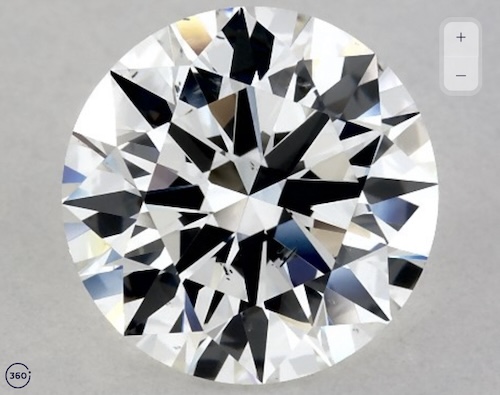©2024 Lab Diamonds Reviews – All Right Reserved.
Education
IGI vs GIA Lab Diamonds
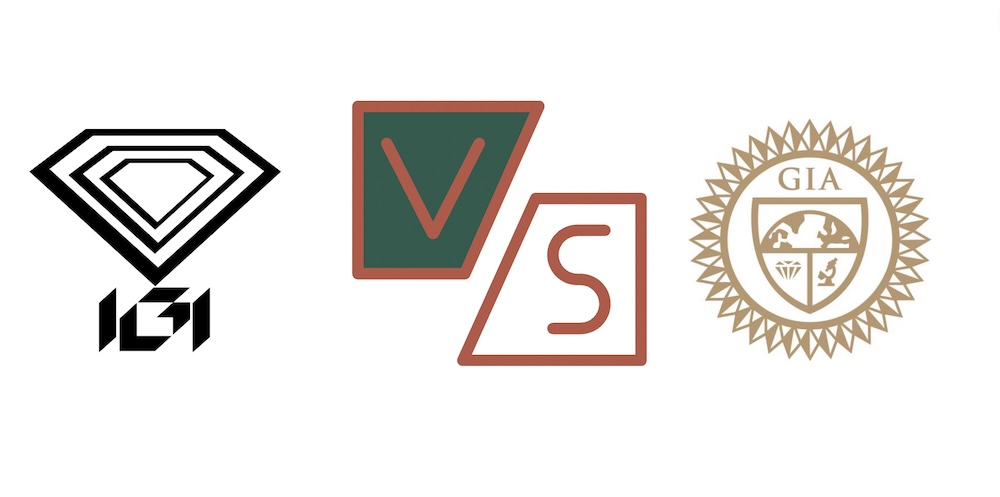
This article has mentions of products from one or more companies, and I may receive compensation if you purchase those products following reading my recommendations.
In the scintillating world of lab-grown diamonds, a symphony of technology and artistry creates gems that rival nature’s finest. These marvels of modern science have not only captivated the hearts of jewelry enthusiasts but also brought a new dimension to the diamond industry. However, amid their growing popularity, one question remains pivotal for discerning buyers: how do we gauge the quality and authenticity of these lab-crafted treasures? This is where the role of diamond certification, particularly by esteemed institutions like the International Gemological Institute (IGI) and the Gemological Institute of America (GIA), becomes indispensable.
What's In This Guide
ToggleUnderstanding the nuances of IGI and GIA certifications is more than an exercise in academic knowledge; it’s a crucial step in making an informed purchase. Both institutions are renowned for their stringent standards and comprehensive reports, offering a seal of assurance for your precious investment. In this article, we delve deep into the realms of these two eminent certifying bodies, comparing and contrasting their methods and merits, to guide you in choosing the diamond that not only sparkles but also speaks the truth of its quality.
What is Diamond Certification?
Before we embark on the journey of comparing IGI and GIA, let’s first unfold the concept of diamond certification. Diamond certification is the thorough assessment of a gemstone by a qualified and independent laboratory. These certifications are not just mere documents; they are passports of authenticity and quality for each diamond, providing a detailed report of its characteristics.
Certification becomes a beacon of trust in an industry where quality is measured in minute details. It evaluates crucial aspects like the 4Cs of diamonds—Cut, Color, Clarity, and Carat weight—alongside other factors such as fluorescence, symmetry, and polish. For lab-grown diamonds, certification also verifies their origin, ensuring that what you purchase is indeed a product of technological advancement and not of natural extraction.
The essence of diamond certification lies in its role as a guarantor of value. It arms buyers with knowledge and confidence, ensuring that the beauty they hold is not just skin deep but is also a testament to quality and craftsmanship. Whether it’s for an engagement ring, a special gift, or a personal treat, a certified diamond stands as a symbol of informed choice and lasting value.
Overview of IGI (International Gemological Institute)
The International Gemological Institute (IGI) has carved out a significant niche in the realm of lab-grown diamonds, emerging as a frontrunner in this sector. Established in Antwerp in 1975, IGI has expanded its global footprint, becoming synonymous with trust and expertise in diamond certification. Its early adoption and specialization in lab-grown diamonds have set a benchmark, positioning it as a pioneer in this growing field.
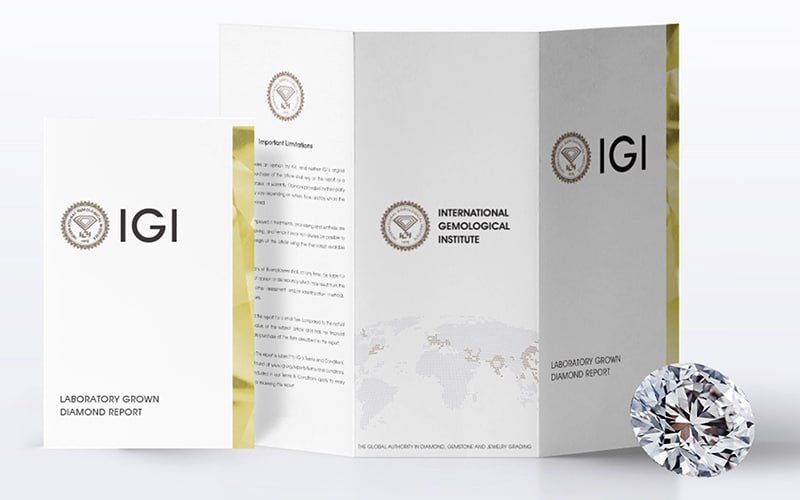
IGI’s approach to grading lab-grown diamonds is comprehensive and tailored to their unique characteristics. They were the first to develop detailed grading standards specifically for lab-created diamonds, acknowledging the nuances that differentiate them from their natural counterparts. This specialized focus has not only enabled IGI to offer precise and reliable certifications but also to contribute to the evolving standards of lab-grown diamond quality.
The institute’s certification reports are revered for their thoroughness, encompassing all critical aspects of diamond assessment. From evaluating the 4Cs to verifying the synthetic origin of the stone, IGI’s reports offer a detailed and transparent account of each diamond’s attributes. Their commitment to accuracy and integrity in grading makes IGI-certified lab-grown diamonds a preferred choice for both consumers and industry insiders, affirming IGI’s status as a trailblazer in this sector.
In search of a premium IGI-certified lab-grown diamond? Explore the exquisite collections at Whiteflash and Brilliant Earth. Known for their quality and ethical sourcing, both offer a range of stunning options to suit your unique style. Visit Whiteflash for exceptional service/quality and Brilliant Earth for sustainable luxury.
Overview of GIA (Gemological Institute of America)
While the Gemological Institute of America (GIA) is globally celebrated for its unmatched reputation in certifying natural diamonds, its foray into lab-grown diamonds has also been noteworthy. Founded in 1931, GIA is acclaimed for setting the global standards for diamond grading and is often regarded as the final word in diamond certification.
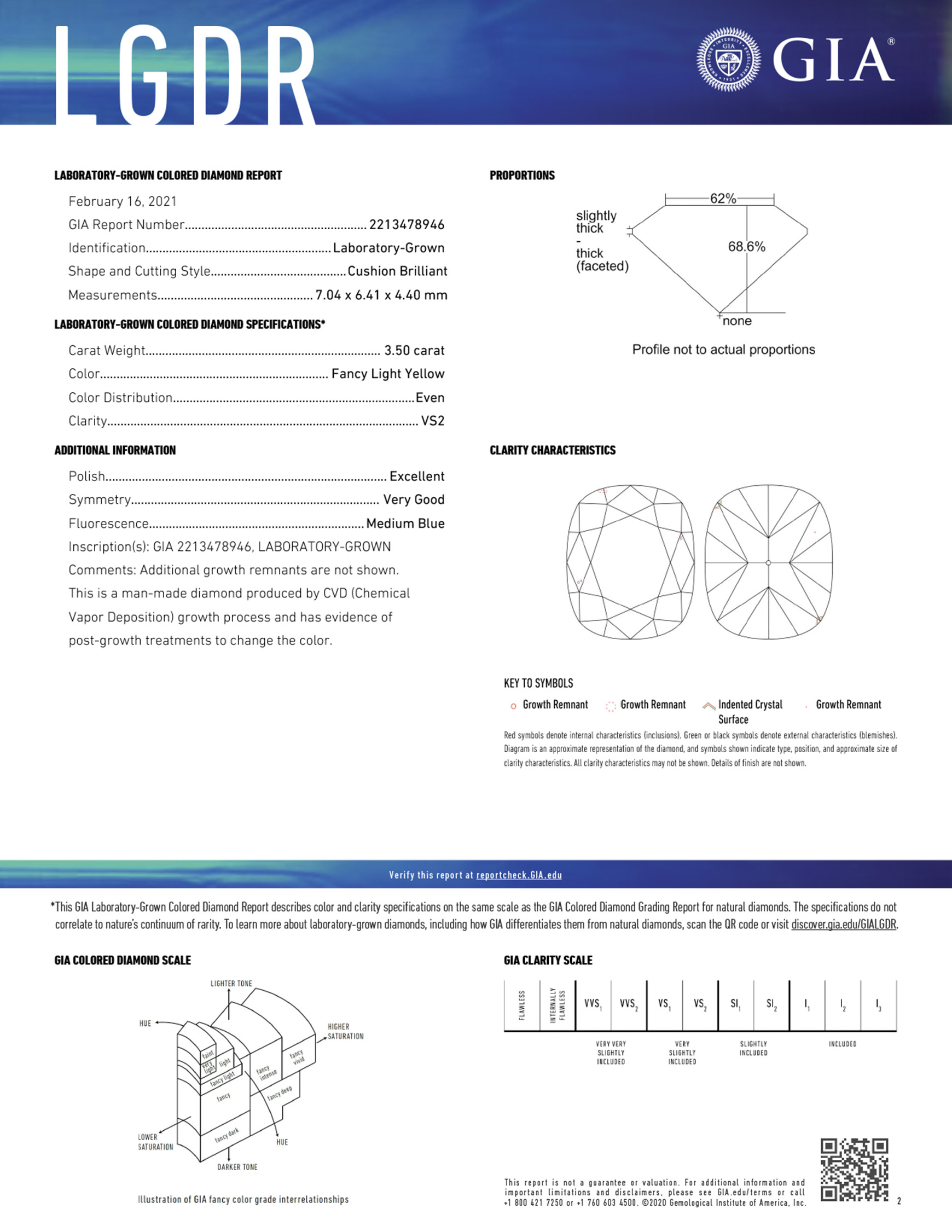
GIA Colored Lab Diamond Report
GIA’s entrance into the lab-grown diamond arena brought with it a legacy of trust and unparalleled expertise. Although IGI has been more established in the lab-grown sector, having started certifying these diamonds earlier and becoming a go-to authority, GIA’s foray into this space signals its recognition of the growing importance of lab-created diamonds.
GIA’s methodology in grading lab-grown diamonds is grounded in the same rigor and precision that it applies to natural diamonds. The institute provides detailed grading reports that meticulously assess the quality of lab-grown diamonds using the traditional 4Cs criteria. However, they also include specific information on the synthetic origin and the manufacturing process, which is crucial for buyers and industry experts.
While IGI currently leads in the lab-grown diamond certification realm, GIA’s expanding involvement and its longstanding reputation in the field of natural diamonds add a layer of esteemed credibility to their certification of lab-created stones. This dynamic creates a competitive and evolving landscape in diamond certification, offering consumers diverse and reliable options for verifying the quality of their lab-grown diamonds.
For those in pursuit of GIA-certified lab-grown diamonds, explore the exceptional selections at Whiteflash, Blue Nile, and Brilliant Earth. Each offers a diverse range of high-quality, GIA-graded diamonds to match your discerning taste. Choose Whiteflash for superb customer care, Blue Nile for a vast inventory, and Brilliant Earth for their commitment to ethical sourcing.
Comparing IGI and GIA Certification
The distinction between IGI and GIA certifications becomes clear when we place them side by side. The IGI, an early adopter in the lab-grown diamond sector, has established a comprehensive grading system that’s specifically tailored to these diamonds. Their reports are detailed, providing clear insights into each diamond’s quality. On the other hand, GIA brings its longstanding reputation and stringent grading standards from the natural diamond industry to its certification of lab-grown diamonds.
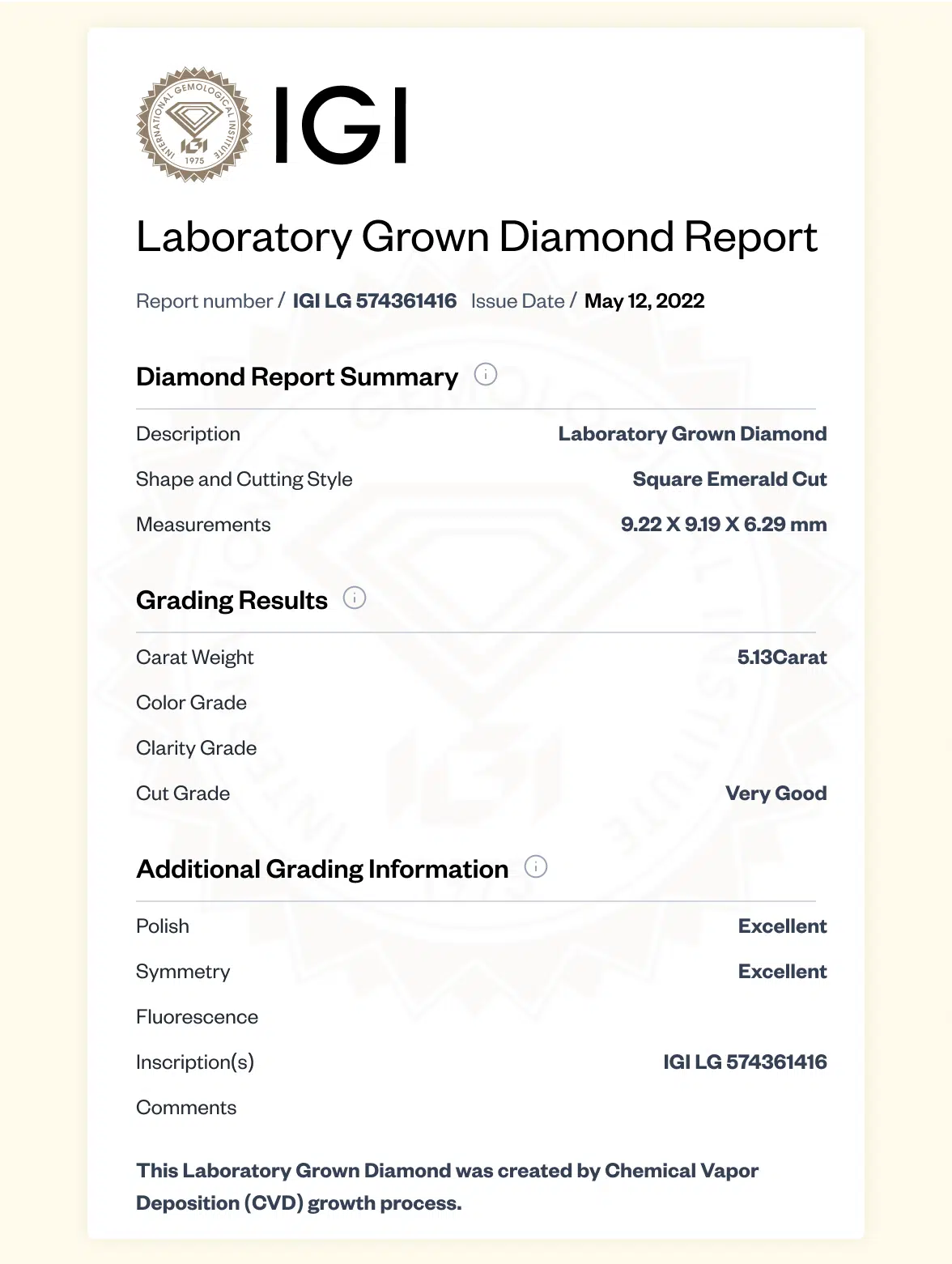
IGI Lab Grown Diamond Certificate
In terms of grading scales, both IGI and GIA employ the standard 4Cs criteria, but there are subtle differences in how they interpret and represent these grades. For instance, IGI’s color grading for lab-grown diamonds may slightly differ from GIA’s, primarily due to their early specialization in this field. The industry and consumers typically view IGI as the standard for lab-grown diamonds, while GIA’s certification is often sought after for its prestige and the reassurance it brings, drawing from its authority in natural diamonds.
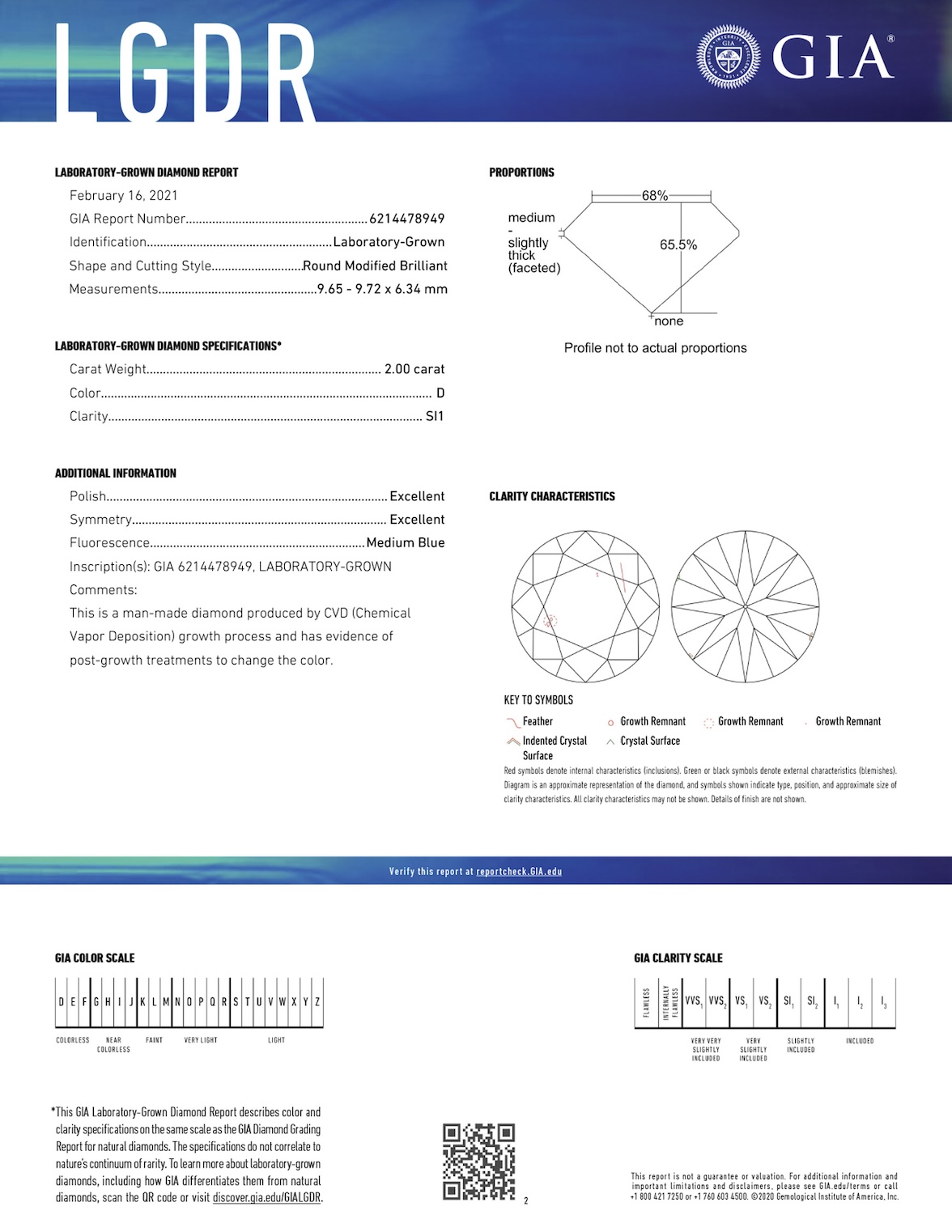
GIA Lab Grown Diamond Certificate
Pros and Cons of IGI and GIA for Lab-Grown Diamonds
When it comes to the advantages of IGI-certified diamonds, the institute’s specialization in lab-grown diamonds stands out. Their expertise and tailored approach mean that their certifications are highly respected and sought after in the lab-grown sector. However, one potential drawback could be that they are not as universally recognized as GIA in broader gemstone and diamond industries.
For GIA, the key advantage lies in its unparalleled reputation and rigorous grading standards. Choosing a GIA-certified lab-grown diamond can offer peace of mind and assurance of quality, akin to their natural diamond certification. However, as they are relatively newer to the lab-grown diamond market compared to IGI, their specific expertise in this area is still evolving.
Impact on Pricing and Value
The choice between an IGI and GIA certification can significantly impact the pricing and perceived value of lab-grown diamonds. IGI’s established authority in lab-grown diamonds often makes their certified stones more desirable in this specific market, potentially affecting their resale value and consumer demand. On the other hand, GIA’s certification, with its globally recognized standards and prestige, can add to the overall value perception of a lab-grown diamond, potentially commanding a higher price in certain markets.
It’s important for consumers to understand that while certification plays a crucial role in valuing a diamond, the inherent quality of the stone remains paramount. The impact of certification on pricing should be considered alongside other factors such as the diamond’s cut, color, clarity, and carat weight, as well as the specific needs and preferences of the buyer.
Consumer Considerations
For consumers navigating the world of lab-grown diamonds, understanding the nuances between IGI and GIA certifications is crucial. When considering an IGI-certified diamond, it’s important to recognize their specialized expertise in lab-grown stones. IGI reports offer detailed insights specific to lab-created diamonds, making them a reliable source for assessing quality in this niche. However, consumers should also be aware that the broader recognition of IGI, outside the lab-grown diamond industry, may not be as extensive as GIA.
In contrast, opting for a GIA-certified lab-grown diamond brings the prestige and assurance associated with a globally recognized leader in diamond certification. Their rigorous standards and meticulous reporting can offer a sense of security about the diamond’s quality. However, buyers should also consider that GIA’s grading system for lab-grown diamonds is an extension of their natural diamond certification process, and they are relatively newer to the lab-grown market.
When making a purchase, it’s advisable for consumers to not only rely on the certification but also to consider factors such as the diamond’s appearance, the specific details in the certification report, and their personal preferences and needs. Consulting with a trusted jeweler or a gemologist can also provide additional insights and guidance.
Industry Trends and Future Outlook
The industry of lab-grown diamonds is rapidly evolving, with both IGI and GIA playing pivotal roles in shaping its future. IGI continues to lead in lab-grown diamond certification, constantly refining their processes to cater to this growing market. Their early entry and specialization have set standards that others in the industry strive to follow.
GIA, with its deep-rooted reputation in the natural diamond sector, is expanding its presence in the lab-grown diamond market. Their entry into this field not only validates the growing significance of lab-created diamonds but also introduces a level of scrutiny and standardization that could influence future industry practices.
Looking ahead, we can anticipate more advancements in certification technologies and methodologies, as both institutes strive to adapt to the changing landscape of the diamond industry. This competition and innovation are likely to benefit consumers, offering them more reliable and transparent options for assessing the quality of lab-grown diamonds.
Conclusion
In the sparkling journey of choosing a lab-grown diamond, the choice between IGI and GIA certification is more than a mere technicality—it’s a decision that aligns with your values, preferences, and trust. IGI, with its specialized focus and pioneering role in lab-grown diamonds, offers expertise and detailed assessments tailored to these gems. GIA, renowned for its stringent standards and global reputation in natural diamonds, brings a level of assurance and prestige to the lab-grown diamond market.
Ultimately, whether you choose an IGI or GIA-certified lab-grown diamond, your decision should be informed by a comprehensive understanding of each certification’s strengths and limitations. By considering these factors alongside your personal preferences and needs, you can select a diamond that not only sparkles brilliantly but also stands as a testament to informed choice and enduring quality.
As you conclude your journey through the world of lab-grown diamonds, consider beginning your search with Whiteflash. Known for their top-tier quality and exceptional customer service, Whiteflash stands out as the premier choice for discerning buyers. For those who prioritize ethical sourcing along with a beautiful selection, Brilliant Earth is an excellent option. And for a wide variety of choices, don’t forget to explore Blue Nile’s extensive collection.

